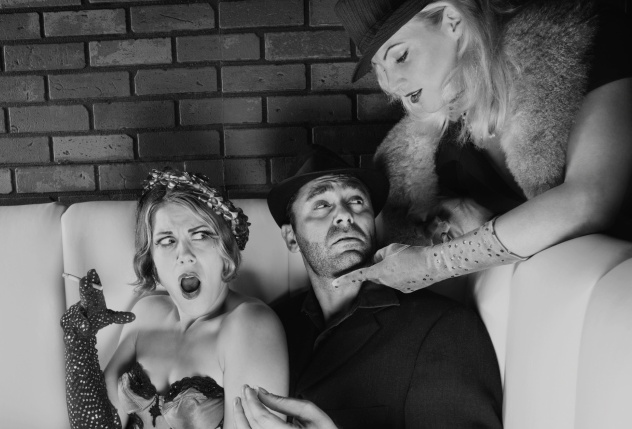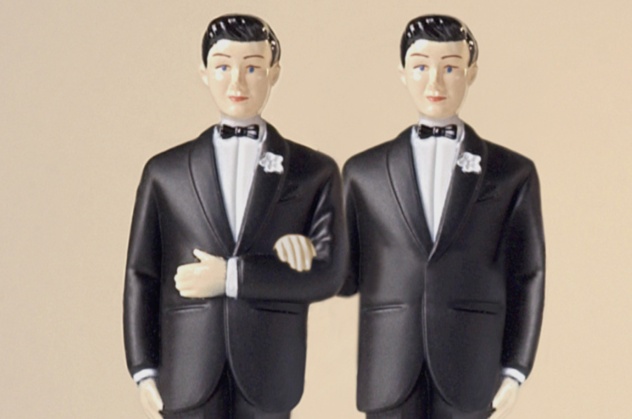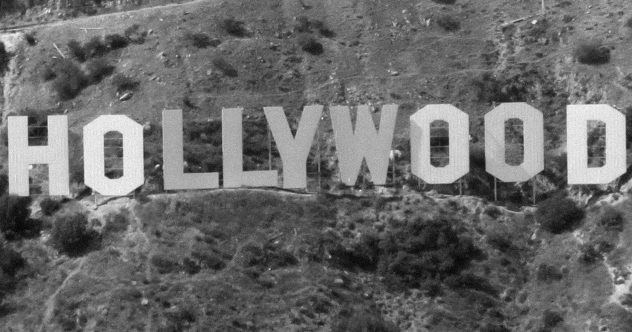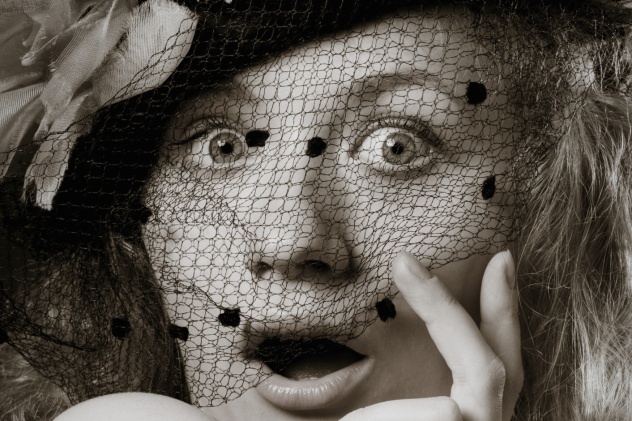 Technology
Technology  Technology
Technology  Humans
Humans 10 Everyday Human Behaviors That Are Actually Survival Instincts
 Animals
Animals 10 Animals That Humiliated and Harmed Historical Leaders
 History
History 10 Most Influential Protests in Modern History
 Creepy
Creepy 10 More Representations of Death from Myth, Legend, and Folktale
 Technology
Technology 10 Scientific Breakthroughs of 2025 That’ll Change Everything
 Our World
Our World 10 Ways Icelandic Culture Makes Other Countries Look Boring
 Misconceptions
Misconceptions 10 Common Misconceptions About the Victorian Era
 Mysteries
Mysteries 10 Strange Unexplained Mysteries of 2025
 Miscellaneous
Miscellaneous 10 of History’s Most Bell-Ringing Finishing Moves
 Technology
Technology Top 10 Everyday Tech Buzzwords That Hide a Darker Past
 Humans
Humans 10 Everyday Human Behaviors That Are Actually Survival Instincts
 Animals
Animals 10 Animals That Humiliated and Harmed Historical Leaders
Who's Behind Listverse?

Jamie Frater
Head Editor
Jamie founded Listverse due to an insatiable desire to share fascinating, obscure, and bizarre facts. He has been a guest speaker on numerous national radio and television stations and is a five time published author.
More About Us History
History 10 Most Influential Protests in Modern History
 Creepy
Creepy 10 More Representations of Death from Myth, Legend, and Folktale
 Technology
Technology 10 Scientific Breakthroughs of 2025 That’ll Change Everything
 Our World
Our World 10 Ways Icelandic Culture Makes Other Countries Look Boring
 Misconceptions
Misconceptions 10 Common Misconceptions About the Victorian Era
 Mysteries
Mysteries 10 Strange Unexplained Mysteries of 2025
 Miscellaneous
Miscellaneous 10 of History’s Most Bell-Ringing Finishing Moves
10 Shocking Facts About Silent-Era Hollywood
When most of us think about silent-era Hollywood, we imagine actors and actresses acting respectably, unlike like the tabloid fodder that exists today. However, if the history of Hollywood is truthfully examined, we find that many of the stereotypes we have in our minds are just that—stereotypes. This list attempts to dispel any misconceptions about the silent era that you may have.
10 Drug Use And Drug Deaths Were Surprisingly Common

While many of us think that silent Hollywood was drug-free because of antiquated ideas about drug use, drugs were actually frequently used.
Wallace Reid was one of the biggest romantic stars of the silent era. He was known as “the screen’s most perfect lover” and starred in over 200 films before his death. He was a favorite of Cecil B. DeMille in the early days of his career. However, in 1919, Wallace Reid was severely injured in a train crash. If Reid had taken the time to recover, his career would not have been lost. Instead, he took to morphine to ease the pain from his injuries. In 1923, at only 31 years old, Wallace Reid died from morphine addiction.
Wallace Reid wasn’t the only popular star who was an addict. Alma Rubens, a silent beauty queen, struggled with cocaine addiction throughout much of her career and was arrested in 1931 for cocaine possession. In possibly her most curious role, Rubens acted with Douglas Fairbanks in the 1916 cult film The Mystery of the Leaping Fish, a comedy dealing with cocaine use. At the height of her career, Rubens was making $3,000 per week. However, cocaine and morphine abuse so destroyed Rubens that she was described as having “drifting speech and glassy eyes” on the set. After a public breakdown in the late 1920s, Rubens was hospitalized, to no avail. In 1931, Rubens was forced to release a sensational memoir to pay her bills. She died soon after.
9 Adultery, Divorce, And Sensational ‘Headline’ Relationships Were Common

While divorce for most couples during the early 20th century was unthinkable, it was actually quite frequent for many of Hollywood’s biggest stars, and just like today, fan magazines were there to cover every last detail. One of the most prominent celebrity marriages from the silent era was that of Mary Pickford and Douglas Fairbanks, both the biggest stars of their time. Pickford met Fairbanks in 1915, and they soon struck up a friendship. It wasn’t until 1916, after Fairbanks’s mother’s death, that they become romantically involved. However, both were married to others when they began their relationship.
The adulterous affair was widely hinted at in magazines through subtly worded articles. In 1918, Beth Fairbanks, Douglas’s wife, filed for divorce on the grounds of adultery, though she didn’t list any names. After Pickford divorced her own husband, Owen Moore, she and Fairbanks married in 1920, becoming Hollywood’s first “super couple” to the delight of their fans. They remained married until they themselves divorced in 1936.
While this is probably the most famous example of a super couple from the silent era, there were other silent stars in famous relationships who weren’t married. When Rudolph Valentino (the quintessential “Latin lover,” who had multiple marriages of his own) died tragically in 1926, the world mourned for him. At his funeral, Pola Negri (another famous actress at the time, as well as Valentino’s latest fling) publicly fainted in front of his coffin and later said that they were engaged.
Sometimes, as a result of these affairs, the stars would be forced to have abortions. While most Americans still considered abortion a mortal sin at the time, it was common for Hollywood types. However, abortion procedures were not standardized and were often dangerous. These were done for the sake of many women’s careers, because children were seen as roadblocks.
8 Morality Clauses Ruled Stars’ Lives

As mentioned previously, stars indulged in affairs frequently, but according to their contracts, doing so could kill their careers. Many contracts had what was known as a “morality clause.” The clause stated that a star could be released from their contracts if they were to engage in “adulterous conduct or immoral relations.” Often, the studio bosses didn’t care what the stars did as long as their affairs didn’t become public. The morality clause made the press and the studio heads judge and jury over stars’ careers.
Stars knew that these clauses could be invoked by the bosses at will, so they remained discreet about their personal lives. Any relationships they engaged in had to be approved by the studios. If they had unapproved relationships, the bosses could fire them and have their reputations ruined in the press.
These clauses could be used for other purposes, too. For many years, studio bosses believed that their stars having children was unpopular with the public. Pregnancies were counted under the morality clause, which was another reason that actresses would have abortions. Gloria Swanson, one of the biggest stars of the silent era, became pregnant by her fiance. Not wanting to risk ruining her career, Swanson had an abortion in France. The abortion, while successful, was life-threatening and almost killed Swanson.
7 Homosexuality Was More Or Less Normal

We all know that homosexuals have had a hard time for most of the previous century. Nevertheless, many of silent Hollywood’s biggest stars were homosexual, and most of their adoring fans were none the wiser. Ramon Novarro, the star of the 1925 epic Ben-Hur, was every girl’s dream. He was handsome, talented, and a bachelor, but he harbored a secret which he would take to the grave: He was homosexual. It was common knowledge in the Hollywood celebrity community, but none of his fans knew. To maintain the image of a straight man, Novarro had to adhere to a very stringent set of standards. This was the usual studio practice for homosexual stars. Most studios didn’t have a problem with homosexual stars as long as they stayed discreet.
One actor, though, refused to follow the rules given to him by his bosses. William Haines was a wildly popular actor in the 1920s, but being homosexual, Haines ran the risk of having his entire career collapse at any moment. To avoid rumors of homosexuality, MGM studio boss Louis B. Mayer ordered Haines to have a so-called “lavender marriage.” Haines refused and was promptly fired. No reason was given to the press about why one of the country’s most popular actors was abruptly fired. Haines and his partner would never look back because many of Haines’ Hollywood friends were open to their “alternate lifestyle” and were willing to hire them as interior designers.
Greta Garbo, the most celebrated actress of her day, also engaged in homosexual affairs. Garbo, who never married, was often shielded by the studios because of her popularity as an actress. After correspondence between Garbo and her acting teacher was released, it became clear that Garbo’s most intimate relationships were with women. Garbo’s love of her own sex, like the others described here, was an open secret in Hollywood but unknown to the public.
6 Silent Hollywood And The Government Were Very Intertwined
While many actors and actresses today often serve as activists and advocates or even hold offices in government, Hollywood was never so entwined with the workings of the government as it was during the silent era. For the later half of the 1910s, America was sucked into World War I. Before the US entered the war in 1917, many of Hollywood’s biggest filmmakers were vocal pacifists. D.W. Griffith, undoubtedly the most prominent director of the time, made films like Intolerance, which preached against war. However, knowing the value of cinema for the war effort, President Woodrow Wilson met with many of the studio bosses to get them to join in 1916. Soon after, Universal Studios released If My Country Should Call.
At President Wilson’s urging, every studio was involved in the war effort. Even Griffith, who was against war just one year earlier, directed the pro-war film Hearts of the World in 1917. Louis B. Mayer, years before he took charge of MGM, stated that films were “the great intermediary between the public and the government of Washington.”
Such a blatant display of fraternity between the government and Hollywood is foreign today. Many modern Hollywood stars will give their support for an issue or a candidate, but during World War I, Hollywood became a government propaganda machine, and the stars were the same. Mary Pickford, Douglas Fairbanks, and Charlie Chaplin all made public appearances during military parades and bond drives across the country, making untold millions for the war effort.
5 Fan Magazines Were Just As Important As They Are Today

Fan magazines have been around since almost the birth of cinema. The first fan magazine was Photoplay, which began operating in 1911. It was an immediate success. Other publishers followed suit, forming other fan magazines like Motion Picture Magazine the same year and Picture Play in 1915. In the days before the Internet, fan magazines were often the only access that readers had to the private lives of their favorite celebrities. Because of this, fan magazines were even more influential than they are today. At the time, the magazines were targeted toward women, often middle-class housewives who were not permitted to work by their husbands. Gossip and relationships filled most of the pages.
Fan magazines also had the power to make or break careers, and they were sometimes used to spread sordid rumors which could ruin lives and reputations. One such case was the tremendously popular “flapper” actress Clara Bow. Clara Bow was one of the highest-grossing stars of the silent era. Ironically, Bow’s career first began after winning a contest in a fan magazine, but her career became the fodder for the magazine’s most tawdry rumors. After a nervous breakdown, Bow quit the film industry for good.
4 Silent Films Were Criticized More Than Most Movies Today

Today, many film historians and critics consider silent films to be some of the most beautiful artistic expressions of the past century. The pantomime and cinema itself is now seen as its own distinct art form. However, while most serious film fans today call recent films classless and unoriginal, critics of the past derided silent films as even more crass. Consider this 1922 article written for The English Review: “This new form of illusion cannot be called art . . . At its worst it is a kind of eye-frenzy; at its best it causes a headache.”
The same article goes on to criticize the sexuality of American films:
Look at the Auction of Souls [a 1919 film] bestiality. One scene depicted a row of crucified girls. Of course the thing was done in America. The maidens were chosen; the men went to see their comeliness . . . The whole gamut of life was presented, short of actual rape, which the police cut.
The article, written by drama critic Gordon Craig, was not the only one that he wrote about silent films. To further stick it to the film industry, Craig also wrote:
It appeals to the vulgarity of most . . . The idleness of many . . . The economy of all . . . The fear of the ignorant . . . The laziness of half the world . . . The curiosity of the other half . . . The “wisdom” (i.e., the pocket) of the few . . . Therefore it protects the few . . . and is against the many. Still it pretends to be for the people!
3 The Studio System Was Started By Independent Filmmakers

Today, when we think of mainstream Hollywood, we think of big companies making big films for big profits and nothing more. It may come as a surprise to many that the entire reason that films are made in Hollywood comes from a few independent filmmakers who were brave enough to go against the then-established industry. In the early days of silent films, Thomas Edison’s film company, along with the other biggest companies, formed the Motion Picture Patent Company, or “the Trust,” in 1908. The Trust controlled all distribution and production of films and film equipment, so anyone who wanted to make films or enter the industry had to have the express permission of the Trust and had to buy their equipment from them.
During this time, the vast majority of films being produced were short films or serial films, but when feature-length films were being imported from Europe to great success, many wannabe filmmakers wanted to cash in on the craze. However, the Trust was always against feature-length films, so only independent filmmakers could make them. Since most films were made on the East Coast by the Trust, independent filmmakers Jesse Laske and Samuel Goldfish (he later changed his name to the more famous Goldwyn) went first to Flagstaff, Arizona, and then to the end of the line—a community in Los Angeles called Hollywood where they made popular feature films against the permission of the “Trust” in a studio converted from a barn.
The first film that Laske and Goldwyn made, along with first-time director Cecil B. DeMille, was The Squaw Man. Even though the film was shot far away from the Trust, it was almost destroyed when several rolls of footage were sabotaged. While many blame the Trust for this act, the real perpetrators remain a mystery. When the film was released, it was vastly different from what most audiences saw and changed the industry forever. Eventually, Laske and Goldwyn’s company became Paramount, and the movie companies that went to Hollywood to escape the tyranny of the Trust became the mainstream studio system that still exists in one form or another today.
2 Early Silent Films Had Some Heavy Subject Matter

While many of us have seen a Hollywood film that deals with intense subjects, many of us have not watched a silent film dealing with subjects that are still quite taboo today. Such films have, in fact, existed since the very early days of silent Hollywood. Damaged Goods, a 1914 film centered around a young couple contracting syphilis, was one such film, which caused the New York Times to proclaim: “They will pour oil on the flames of vice.”
Many filmmakers made entire careers from making such “vice” films. One such person was Lois Weber, who made Where Are My Children? Weber knew that these films were both educational and wildly profitable. She made films on a variety of topics, such as substance abuse in Hop, the Devil’s Brew (1916), the death penalty in The People vs. John Doe (1916), and the female experience in What Do Men Want? (1917). Her films, while commercially successful, were also some of the only times that the public heard of such issues, and they were portrayed in such a way as to get the common man to think.
Even directors like Cecil B. DeMille knew the power of vice films. During the silent era, DeMille would often use controversial subjects to help boost the success of his films. One such film was his last silent film, The Godless Girl (1928), which dealt with the issues of boys and girls’ reformatory schools and atheism, which was quite foreign in a time when the majority of the population was religious. While atheism is more widespread today, it was shocking back then, and much of the stir for the film came from the clergy and other religious leaders.
1 The Studio Heads Controlled Everything

Today, most stars do whatever they please and have total control over their careers, but the studio heads of the silent era had an almost comical level of control over their stars. They could destroy a film star’s career on a whim, as was the case with romantic actor John Gilbert. Gilbert was one of the highest-grossing stars of the silent era, but he’d earned the dislike of MGM head Louis B. Mayer. Mayer insulted Gilbert, causing him to attack, a move which would cost his career. When sound films became the norm in Hollywood, Mayer spread vicious rumors about Gilbert’s voice and put him in poor-quality films, destroying his career.
Another story of a studio head destroying a career is that of Irving Thalberg (pictured above), then the head of production at Universal Studios, and Erich Von Stroheim, the extravagant actor and director. Stroheim had been successful with his flamboyant, over-budget productions, but he crossed the line with his 1922 film, Foolish Wives. Thalberg reined in the production and forced Stroheim to work by his standards. When Stroheim again went over-budget with Merry-Go-Round (1923), Thalberg fired him. This wouldn’t be the last encounter between the two. When Thalberg went to work for MGM, Stroheim was going wildly over-budget with Greed (1925). Thalberg took the 10-hour film and cut it to two, botching it according to most historians. The message was clear: The studio head controlled every aspect of a film, from production to the stars. This was to be the case for the next several decades during the sound era.
Gordon Gora is a struggling author who is desperately trying to make it. He is working on several projects but until he finishes one, he will write for Listverse for his bread and butter. You can write him at [email protected].








